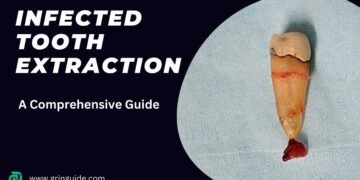Table of Contents
Introduction to Tooth Sensitivity
Tooth sensitivity, also known as dentin hypersensitivity, is a common dental condition characterized by a sharp pain or discomfort in response to certain stimuli. This discomfort typically arises when consuming hot, cold, sweet, or acidic foods and drinks, or even when brushing teeth or breathing in cold air. The pain is usually sudden and temporary, but it can significantly impact an individual’s daily life, making routine activities such as eating and drinking quite uncomfortable.
Tooth sensitivity occurs when the protective enamel on teeth becomes worn down or when gums recede, exposing the underlying dentin. Dentin contains microscopic tubules filled with fluid that connect to the nerve endings inside the tooth. When exposed to external stimuli, these tubules allow the stimuli to reach the nerve endings, causing pain or discomfort. The condition can be caused by various factors, including aggressive tooth brushing, periodontal disease, tooth decay, cracked teeth, and the use of teeth-whitening products.
The prevalence of tooth sensitivity is notable, affecting a significant portion of the population. Studies indicate that approximately 1 in 8 people experience tooth sensitivity at some point in their lives. While it can affect individuals of any age, it is most commonly reported among adults aged 20 to 40 years. The condition can range from mild to severe, and its impact on daily life can vary accordingly. For some, tooth sensitivity may merely be an occasional annoyance, while for others, it can be a persistent issue that interferes with the enjoyment of food and drink, as well as overall oral hygiene practices.
Understanding the underlying causes and symptoms of tooth sensitivity is crucial for effective management and treatment. By recognizing the signs and seeking appropriate dental care, individuals can alleviate discomfort and improve their quality of life. In the following sections, we will explore the causes, treatments, and remedies for tooth sensitivity, providing a comprehensive guide to managing this common dental issue.
Common Causes of Tooth Sensitivity
Tooth sensitivity, often characterized by a sharp pain or discomfort in response to certain stimuli, can be attributed to a variety of underlying causes. Understanding these causes is crucial for effective management and treatment.
- One of the primary culprits is enamel wear. The enamel, which is the hard, protective outer layer of the teeth, can erode over time due to acidic foods, aggressive brushing, or bruxism (teeth grinding). When enamel wears down, it exposes the dentin, which contains microscopic tubules leading to the nerve, thereby causing sensitivity.
- Another significant factor is gum recession. This condition occurs when the gum tissue surrounding the teeth pulls back, exposing the tooth roots. The roots are not covered by enamel and are therefore more susceptible to external stimuli. Gum recession can result from periodontal disease, improper brushing techniques, or even natural aging. As the roots become exposed, individuals often experience heightened sensitivity.
- Tooth decay is also a common contributor to tooth sensitivity. Cavities or caries form when harmful bacteria in the mouth produce acids that erode the tooth structure. As decay progresses, it can penetrate the enamel and reach the dentin, leading to pain and discomfort. Early detection and treatment of cavities are essential to prevent further complications.
- Fractured teeth can introduce another layer of sensitivity. Cracks or splits in the teeth can occur due to trauma, biting on hard objects, or extreme temperature changes. These fractures can expose the dentin and even the pulp, causing significant discomfort and necessitating prompt dental intervention.
- Lastly, exposed dentin is a direct cause of sensitivity. Whether due to enamel erosion, gum recession, or tooth decay, when the dentin is exposed, the tiny tubules within it allow stimuli such as hot, cold, sweet, or acidic foods to reach the nerve endings, triggering pain. Addressing the root cause of exposed dentin is vital to alleviating tooth sensitivity and improving overall oral health.
Professional Treatments for Tooth Sensitivity
Tooth sensitivity is a common dental issue that can be effectively managed through various professional treatments. One of the most prevalent methods is fluoride treatments. Dentists often apply fluoride directly to the teeth in the form of a gel, foam, or varnish. This strengthens tooth enamel and reduces sensitivity by replenishing lost minerals. Fluoride treatments are generally safe, but excessive use can lead to dental fluorosis, particularly in children.
Another effective treatment is the application of dental sealants. These thin, protective coatings are painted onto the chewing surfaces of the teeth, typically the molars, to prevent decay and reduce sensitivity. Sealants can last several years before needing replacement, offering a durable solution. However, they are not suitable for all patients, especially those with existing tooth decay or dental restorations.

Bonding agents are also commonly used to address tooth sensitivity. This involves applying a tooth-colored resin to the exposed root surfaces or areas where enamel erosion has occurred. The bonding material acts as a barrier, protecting the nerves within the tooth from external stimuli. While bonding is effective, it may require periodic maintenance as the resin can wear down over time.
In more severe cases, gum grafts may be recommended. This surgical procedure involves taking tissue from another part of the mouth, often the palate, and attaching it to the areas where the gums have receded. Gum grafts can cover exposed roots, reducing sensitivity and improving overall gum health. While highly effective, this treatment comes with the usual risks associated with surgical procedures, such as infection and discomfort during recovery.
Each of these professional treatments offers a unique approach to managing tooth sensitivity, catering to different levels of severity and patient needs. It is essential to consult with a dental professional to determine the most appropriate treatment plan tailored to individual circumstances.
Home Remedies for Tooth Sensitivity
Tooth sensitivity can be a persistent and uncomfortable issue, but several home remedies can provide relief.
- One of the most commonly recommended solutions is the use of desensitizing toothpaste. These specially formulated toothpastes contain compounds that help block the pathways that lead to the nerves in your teeth. Regular use can gradually reduce sensitivity and allow you to enjoy hot or cold foods without discomfort.
- Another effective remedy is saltwater rinses. A simple mixture of salt and warm water can help reduce inflammation and promote healing in the mouth. To prepare, dissolve a teaspoon of salt in a glass of warm water and swish it around your mouth for about 30 seconds before spitting it out. This can be done several times a day to alleviate symptoms.
- Clove oil is another natural treatment that has been used for centuries to address dental pain. Cloves contain eugenol, a natural anesthetic that can numb the affected area and reduce discomfort. To apply, soak a cotton ball in clove oil and gently dab it on the sensitive tooth. Be mindful not to use too much, as clove oil is potent and can cause irritation if overused.
- Other natural remedies include the application of a mixture of baking soda and water. This paste can help neutralize acids in the mouth that contribute to tooth sensitivity. Simply mix a small amount of baking soda with water to form a paste, then apply it to the sensitive areas using a toothbrush or your finger. Let it sit for a few minutes before rinsing thoroughly with water.
It’s important to remember that while these home remedies can provide temporary relief, they are not substitutes for professional dental care. If tooth sensitivity persists, it’s advisable to consult a dentist to rule out any underlying conditions that may require more specific treatments. Additionally, practicing good oral hygiene, including regular brushing and flossing, can help prevent the recurrence of sensitivity issues.
Tooth Sensitivity to Cold
Tooth sensitivity to cold is a common dental issue that many individuals experience. This type of sensitivity is often triggered when the dentin layer of the tooth, which is normally protected by enamel, becomes exposed. The dentin contains microscopic tubules that lead to the nerve endings within the tooth. When cold stimuli, such as ice water or cold air, come into contact with these exposed tubules, it can result in sharp, sudden pain.
There are several strategies to manage and reduce sensitivity to cold. Firstly, making dietary changes can significantly help. Limiting the intake of acidic foods and beverages, such as citrus fruits and carbonated drinks, can prevent further erosion of the enamel. Incorporating calcium-rich foods like dairy products and leafy greens can also strengthen the teeth.
Protective measures are equally important. Using a soft-bristled toothbrush can minimize abrasion on the enamel and gums. Additionally, employing a proper brushing technique—gentle, circular motions rather than aggressive scrubbing—can further protect the enamel. It’s also advisable to wait at least 30 minutes after consuming acidic foods before brushing your teeth, as this can prevent further damage to the already softened enamel.
Choosing suitable dental products is essential for managing tooth sensitivity to cold. Desensitizing toothpaste, which contains compounds like potassium nitrate or stannous fluoride, can block the pain signals from the tooth’s surface to the nerve. Mouthwashes formulated for sensitive teeth can also provide relief by creating a protective barrier over the exposed dentin. For more persistent cases, fluoride varnishes applied by a dentist can offer stronger protection, helping to reduce sensitivity over time.
By understanding the reasons behind tooth sensitivity to cold and implementing these strategies, individuals can effectively manage their symptoms and maintain better oral health.
Tooth Sensitivity After Dental Procedures
Tooth sensitivity is a common experience following various dental procedures, including fillings, crowns, root canals, whitening, and cleanings. Understanding why these procedures often lead to temporary sensitivity can aid in managing the discomfort effectively.
During dental procedures like fillings and crowns, the dentist may need to remove decayed or damaged portions of the tooth, which can expose the sensitive inner layers. This exposure often results in heightened sensitivity to temperature changes, pressure, and certain foods. Similarly, root canal treatments, which involve the removal of infected or inflamed pulp, can leave the tooth feeling tender as it heals. Whitening treatments use bleaching agents that can penetrate the enamel and reach the dentin, leading to transient sensitivity.
Routine cleanings, though less invasive, can also cause temporary sensitivity. During a cleaning, plaque and tartar are removed from the tooth surface and gum line, sometimes irritating the gums and exposing more sensitive parts of the teeth. This irritation can result in discomfort, particularly when consuming hot, cold, or sweet foods and beverages.
To cope with tooth sensitivity after dental procedures, it is crucial to follow guidelines provided by dental professionals. These may include using desensitizing toothpaste, which contains compounds that help block the transmission of sensation from the tooth surface to the nerve. Over-the-counter pain relievers can also be effective in managing discomfort. Additionally, avoiding extremely hot, cold, or acidic foods and drinks can prevent triggering sensitivity.
Maintaining good oral hygiene is essential during the recovery period. Gentle brushing with a soft-bristled toothbrush and fluoride toothpaste can help protect the teeth while they heal. In some cases, dentists may recommend additional treatments such as fluoride varnishes or gels to strengthen the enamel and reduce sensitivity.
By understanding the causes of post-procedure tooth sensitivity and implementing these coping strategies, patients can alleviate discomfort and ensure a smoother recovery.
Preventing Tooth Sensitivity
Preventing tooth sensitivity is essential for maintaining long-term dental health and comfort. One of the most effective preventive measures is adhering to a robust oral hygiene routine. Brushing teeth at least twice a day with fluoride toothpaste can help strengthen enamel, which acts as a protective barrier against sensitivity. Additionally, using a soft-bristled toothbrush is crucial as it minimizes the risk of enamel erosion and gum recession, which are common contributors to tooth sensitivity.
Diet also plays a significant role in preventing tooth sensitivity. Limiting the intake of acidic foods and beverages, such as citrus fruits, sodas, and wine, can help preserve enamel integrity. When consuming acidic items, consider using a straw to minimize direct contact with teeth and rinse your mouth with water afterward to neutralize acids.
Regular dental check-ups are indispensable in the early detection and intervention of potential problems that may lead to tooth sensitivity. During these visits, dentists can identify early signs of enamel wear, gum disease, or other issues that could contribute to sensitivity. Professional cleanings help remove plaque and tartar buildup, which can exacerbate sensitivity if left untreated.
It is also beneficial to avoid behaviors that may damage teeth, such as grinding or clenching. Using a mouthguard at night can protect teeth from the effects of bruxism, which can wear down enamel and increase sensitivity. Additionally, avoiding overly aggressive brushing and opting for gentle, circular motions can prevent unnecessary wear and tear on enamel and gums.
Early detection and intervention are vital in managing and preventing tooth sensitivity. By maintaining good oral hygiene, using appropriate tools, being mindful of dietary choices, and scheduling regular dental visits, individuals can significantly reduce the risk of developing tooth sensitivity, thus ensuring a healthier and more comfortable oral environment.
When to See a Dentist for Tooth Sensitivity
Tooth sensitivity is a common dental concern that can often be managed with over-the-counter treatments and proper oral hygiene. However, there are certain situations where professional dental care is essential to address underlying issues effectively. Understanding when to seek a dentist’s advice can prevent further complications and ensure appropriate treatment.
One critical sign that warrants a dental visit is persistent tooth sensitivity. If you experience continuous or recurring discomfort despite using desensitizing toothpaste or other home remedies, it may indicate a more serious problem. Persistent pain could be a symptom of tooth decay, enamel erosion, or even a cracked tooth, all of which require professional assessment and intervention.
Another important indicator is visible damage to your teeth. If you notice chips, cracks, or other forms of structural damage, it is crucial to consult a dentist promptly. Such damage can expose the inner layers of the tooth, heightening sensitivity and increasing the risk of infection or further deterioration.
Swelling or redness around the gums is another sign that should not be ignored. These symptoms often point to gum disease or abscesses, which can significantly contribute to tooth sensitivity. A dentist can diagnose and treat these conditions, helping to alleviate discomfort and restore oral health.
Additionally, if your tooth sensitivity is accompanied by a fever or a bad taste in your mouth, it may indicate an infection that requires immediate professional attention. Prompt consultation with a dentist can prevent the infection from spreading and causing more severe health issues.
In summary, while occasional tooth sensitivity can often be managed independently, persistent pain, visible damage, swelling, or other concerning symptoms necessitate professional dental care. Seeking timely intervention from a dentist ensures that any underlying issues are appropriately addressed, helping to maintain your oral health and prevent further complications.
FAQs
-
What is Tooth Sensitivity?
Tooth sensitivity is a common dental issue that affects many people. It is characterized by a sharp, sudden pain in one or more teeth. This pain can be triggered by various factors, including temperature changes, certain foods, or even brushing and flossing. The pain is usually temporary but can be quite uncomfortable, making it important to understand the underlying causes and treatments.
-
How Do You Stop Sensitive Teeth Pain Fast?
If you’re experiencing tooth sensitivity, there are several ways to alleviate the pain quickly. Using desensitizing toothpaste can help block pain signals from the tooth’s surface to the nerve. Rinsing with a fluoride mouthwash can strengthen tooth enamel and reduce sensitivity. Additionally, avoiding acidic foods and drinks, using a soft-bristled toothbrush, and practicing good oral hygiene can help manage and prevent sensitivity.
-
Is Tooth Sensitivity Good?
While tooth sensitivity itself is not a good condition, it serves as a warning sign that something is amiss in your oral health. Sensitivity can indicate enamel erosion, gum recession, or even cavities. Therefore, experiencing tooth sensitivity should prompt a visit to the dentist to identify and address the underlying cause, ensuring long-term dental health.
-
What Causes Tooth Sensitivity?
Tooth sensitivity, also known as dentin hypersensitivity, occurs when the enamel that protects our teeth gets worn down or when gums recede, exposing the underlying dentin. This exposure can cause pain or discomfort when teeth come into contact with certain stimuli, such as hot or cold temperatures, sweet or acidic foods, or even cold air.











